Introduction To Broad Beans: Definition And Characteristics
Broad beans, also known as fava beans, are a type of legume that belongs to the Fabaceae family. They are generally large, flat and have an oval shape with a green mature seedpod. They are grown all around the world and are popular in a variety of cuisines, particularly those from the Middle East, Europe and North Africa.
Broad beans are a low-fat and nutrient-dense food. They are an excellent source of protein, dietary fiber, iron, calcium, and vitamins A and C. They are also gluten-free, making them ideal for individuals with gluten sensitivities or celiac disease.
- Definition
Broad beans are also known as fava beans and have a distinct, slightly sweet flavour. They can be consumed fresh or dried, and are used in a variety of dishes including soups, stews, salads and dips. The beans themselves are oval in shape, and can be bought fresh in large green seedpods, or can be purchased dried or canned.
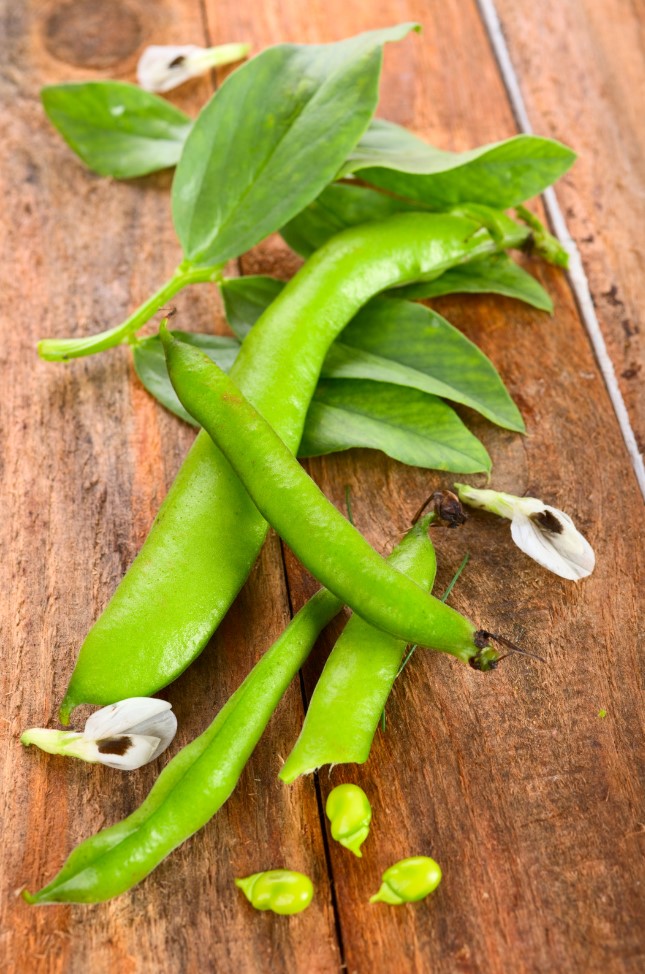
- Characteristics
Broad beans are a versatile crop that can be grown in many different climates and soil types. They prefer environments with cooler temperatures and moist, well-draining soil. They are usually sown in early spring and harvested in early summer, though they can be planted in the fall for a late-winter harvest. These beans are relatively easy to cultivate and do not require extensive care or maintenance.
Broad beans are an ancient crop, with evidence of their cultivation dating back thousands of years. They were a staple food in ancient Rome and have been popular in Mediterranean and Middle Eastern cuisines for centuries.
| Key Characteristics | Details |
|---|---|
| Scientific Name | Vicia faba |
| Flavour | Slightly sweet, nutty |
| Texture | Firm, creamy |
| Colour | Green when fresh, brown when dried |
Broad beans are not only delicious, but are also an excellent source of nutrition. They are versatile and easy to grow, making them a great addition to any diet. In the next section, we will explore the history of broad bean cultivation.
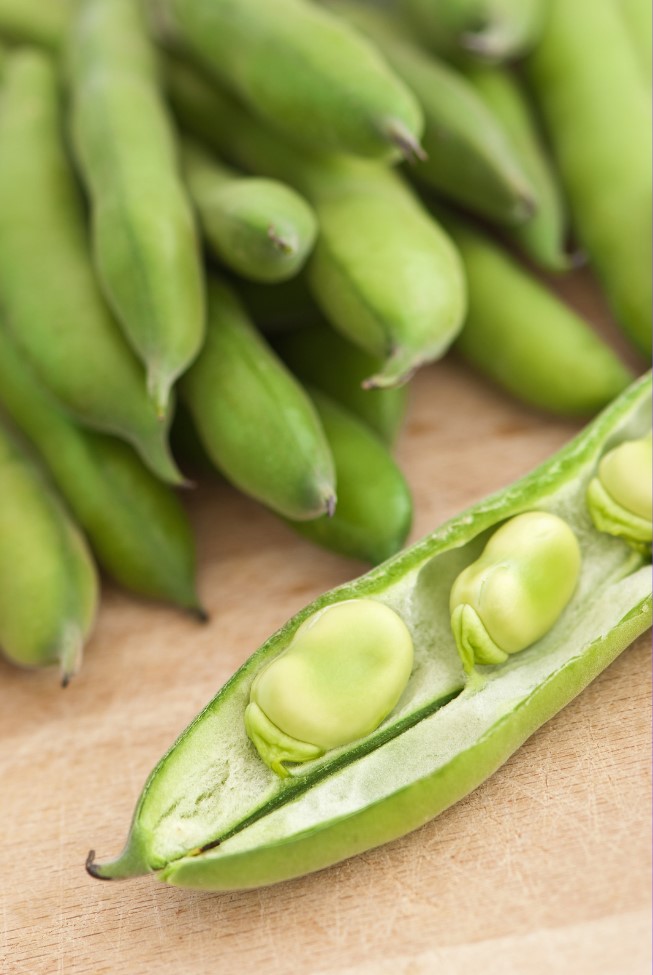
History Of Broad Bean Cultivation: From Ancient Times To Modern Day
The history of broad bean cultivation dates back to ancient times, with evidence of the plant’s domestication found in archaeological sites in the eastern Mediterranean region. These beans, also known as fava beans, were important crops in ancient Greece and Egypt, where they were used both for food and as offerings to the gods.
During the Middle Ages, broad beans became a staple crop in Europe due to their hardiness and ability to grow in a variety of climates. They were commonly consumed by peasants and considered a “poor man’s food,” but were also enjoyed by the wealthy in dishes like the French cassoulet.
In more recent times, broad beans have seen a decline in popularity in some areas, but are still widely consumed in many countries around the world. They are a favored ingredient in Mediterranean and Middle Eastern cuisine, and are often used in stews, salads, and dips like hummus.
| Key takeaway: | The history of broad bean cultivation spans thousands of years and has played an important role in many cultures around the world. While their popularity has fluctuated over time, broad beans remain a nutritious and versatile food that can be enjoyed in a variety of dishes. |
Nutritional Profile Of Broad Beans: Vitamins, Minerals, And Fiber
When it comes to healthy eating, broad beans should be on your list of must-have ingredients. These legumes pack a punch when it comes to nutritional value, offering a range of vitamins, minerals, and fiber. Below, we break down the nutritional profile of broad beans, so you can understand why they are such an important part of a healthy diet.
Vitamins
- Broad beans are an excellent source of Vitamin C, which helps to boost the immune system and protect cells from damage.
- They also contain Vitamin K, which plays a role in blood clotting and bone health.
- Vitamin B6 is another important nutrient found in broad beans, contributing to brain development and reducing inflammation.
Minerals
| Mineral | Amount per 100g |
|---|---|
| Iron | 1.80mg |
| Zinc | 0.88mg |
| Potassium | 347mg |
Broad beans are also a good source of magnesium, copper, and phosphorous, which all play a role in bone health, muscle function, and nerve function.
Fiber
Broad beans are packed with fiber, which is important for maintaining a healthy digestive system. Just one cup of boiled broad beans contains approximately 9 grams of fiber. This can help to keep you feeling fuller for longer, making it easier to maintain a healthy weight.
Overall, the nutritional profile of broad beans makes them an important part of a healthy diet. Whether you are looking to boost your vitamin intake, increase your mineral intake, or get more fiber in your diet, broad beans are a great way to achieve your nutritional goals.
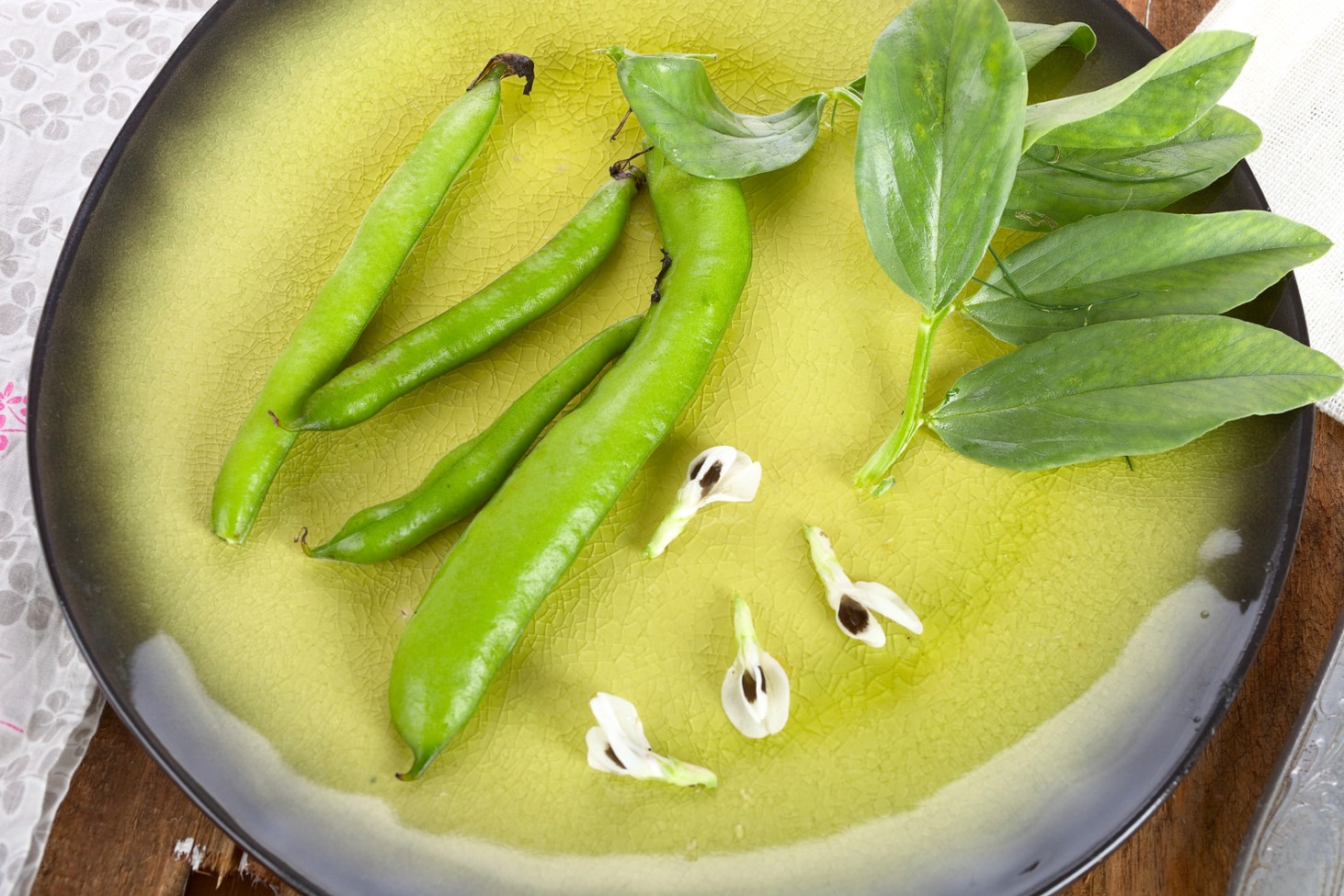
Health Benefits Of Broad Beans: Cardiovascular Health, Digestive Health, And More
Broad beans, also known as fava beans, are a nutritious legume that has been enjoyed for centuries. They are high in plant-based protein, fiber, vitamins, and minerals, making them an excellent addition to any healthy diet. In this blog post, we will explore the numerous health benefits of broad beans, including their impact on cardiovascular health, digestive health, and more.
Cardiovascular Health: One of the most significant benefits of broad beans is their ability to improve cardiovascular health. They are rich in flavonoids, which have been shown to reduce inflammation and lower the risk of heart disease. Additionally, the high fiber content of broad beans can help lower cholesterol levels and regulate blood pressure, both of which are essential for maintaining a healthy heart.
- Flavonoids in broad beans reduce inflammation
- Lower risk of heart disease
- Fiber content aids in lowering cholesterol levels and regulating blood pressure
Digestive Health: Broad beans are also excellent for digestive health. They are a great source of both soluble and insoluble fiber, which helps to promote healthy digestion and reduce the risk of constipation. Additionally, the fiber in broad beans can help regulate blood sugar levels, making them an ideal food for people with diabetes.
- Soluble and insoluble fiber promote healthy digestion
- Reduces risk of constipation
- Regulates blood sugar levels
In addition to cardiovascular and digestive health, broad beans have been linked to numerous other health benefits, including improved bone health, enhanced immune function, and reduced risk of certain cancers. Adding this versatile legume to your diet is an excellent way to promote overall health and well-being.
| Health Benefit | How Broad Beans Help |
|---|---|
| Bone Health | High in calcium and other bone-building nutrients |
| Immune Function | Rich in antioxidants, vitamins, and minerals that support immune system health |
| Cancer Prevention | High in phytonutrients that may help prevent certain types of cancer |
To reap the many health benefits of broad beans, try incorporating them into your diet in a variety of ways. You can add them to soups, stews, salads, or sauté them with other vegetables. They also make a delicious and nutritious snack when roasted with a bit of olive oil and sea salt. Experiment with different flavors and seasonings to find your favorite way to enjoy this healthy legume.
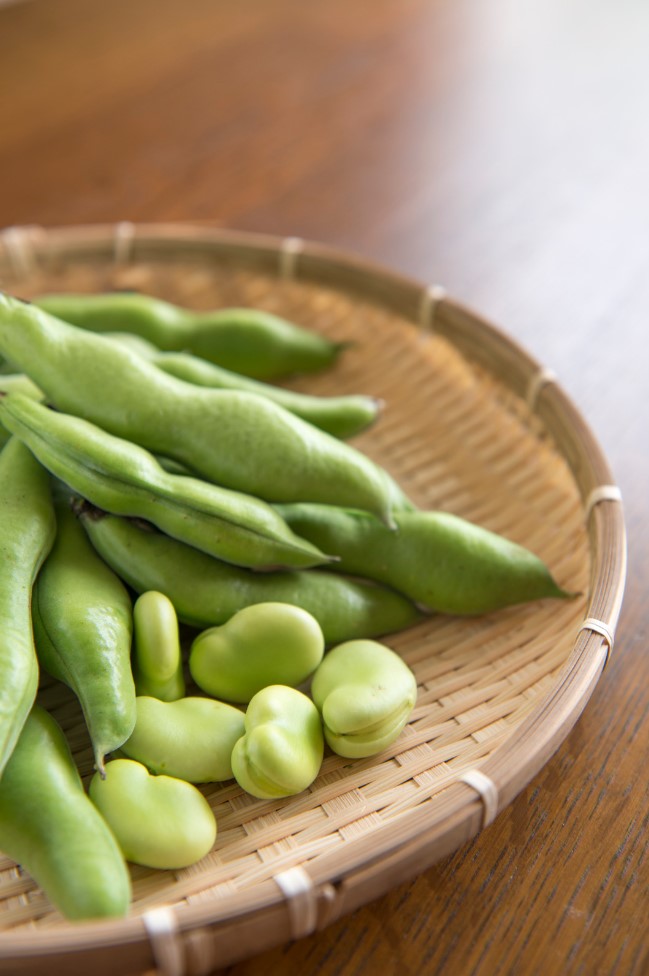
Cooking With Broad Beans: Tips And Tricks For Delicious Recipes
Broad beans, also known as fava beans, have been enjoyed as food for thousands of years. In fact, they were a staple in the diets of ancient Greeks and Romans. Broad beans are large and flat, with a tough outer skin that must be removed before cooking. They have a distinct earthy flavor and a creamy texture that makes them perfect for a variety of dishes. Cooking with broad beans can be intimidating for some, but fear not! With a few tips and tricks, you can create delicious recipes that showcase this nutritious legume.
- Tip #1: Blanching broad beans is an important step in many recipes. It involves boiling the beans for a short time, then immediately placing them in ice water to stop the cooking process. Blanching helps to remove the tough outer skin and gives the beans a bright green color.
- Tip #2: Broad beans pair well with bold flavors like garlic, lemon, and herbs like mint and thyme. Try sautéing them with garlic and olive oil, then finishing with a squeeze of lemon and a sprinkle of fresh herbs.
- Tip #3: Broad beans can be used in a variety of dishes, from salads and dips to soups and stews. They are also a great addition to pasta dishes, adding both a unique texture and flavor.
| Recipe: | Description: |
|---|---|
| Broad Bean Salad | This refreshing salad combines blanched broad beans with cherry tomatoes, fresh herbs, and a tangy vinaigrette. Perfect for a summer day! |
| Broad Bean Hummus | A twist on traditional hummus, this recipe uses broad beans for a creamy and delicious dip. Serve with pita chips or fresh veggies. |
| Broad Bean and Sausage Soup | This hearty soup is perfect for a cold winter day. The creamy broad beans and savory sausage make for a delicious and filling meal. |
Cooking with broad beans is a great way to add variety to your meals while also reaping the nutritional benefits. Broad beans are a good source of protein, fiber, and important vitamins like folate and vitamin B6. Next time you’re in the kitchen, give these tips and recipes a try and discover how delicious broad beans can be!
Broad Beans And Weight Loss: A Low-Calorie, High-Protein Option
Broad beans, also known as fava beans, are a great option for those looking to lose weight. They are low in calories and high in protein, making them a filling and satisfying addition to any meal. In fact, just one cup of cooked broad beans contains only around 170 calories and a whopping 13 grams of protein!
Beyond their nutritional value, broad beans are also versatile in the kitchen. They can be enjoyed in a variety of dishes, from salads to soups to stews. One popular recipe is broad bean dip, which is a healthy and delicious option for snacking.
- A simple broad bean dip recipe:
- Blend 2 cups of cooked broad beans with 2 cloves of garlic, 1/4 cup of lemon juice, 1/4 cup of olive oil, and salt and pepper to taste.
- Serve with veggies or whole grain crackers for a satisfying snack.
In addition to being low in calories and high in protein, broad beans also contain a variety of important nutrients. They are a good source of fiber, which can aid in digestion and promote feelings of fullness, as well as vitamins and minerals such as folate, iron, and magnesium.
Overall, broad beans are a healthy and nutritious option for those looking to lose weight. Incorporating them into your diet can help you meet your weight loss goals while also providing a variety of important nutrients.
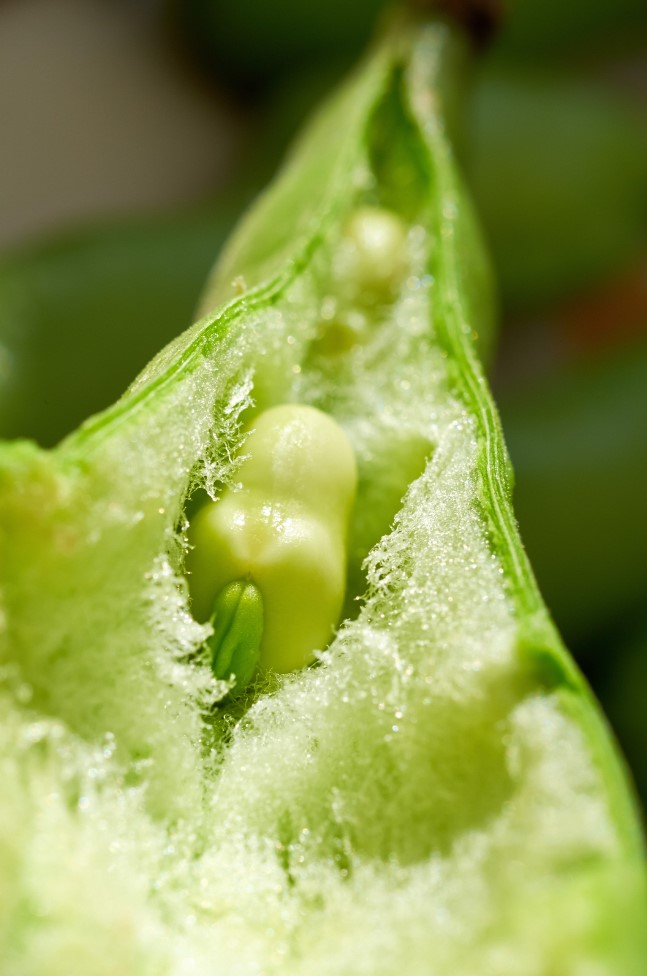
Comparing Broad Beans To Other Legumes: Nutrition And Culinary Uses
Broad beans have been a staple in many cuisines for centuries. Popular in Mediterranean, Middle Eastern, and Asian dishes, broad beans are versatile and delicious. But how do they compare to other legumes in terms of nutrition and culinary uses? Let’s take a closer look and see what sets broad beans apart.
Nutrition: Broad beans are nutrient-dense, with high levels of protein, fiber, and antioxidants. They are also rich in vitamins and minerals, such as iron, potassium, and folate. In comparison to other legumes, broad beans contain more protein than black beans and chickpeas, but less than lentils. They are also a good source of complex carbohydrates, making them a great option for sustained energy throughout the day.
- Black beans – High in fiber and protein, black beans are a great option for vegetarian and vegan diets. They are also a good source of iron and folate.
- Chickpeas – Versatile and delicious, chickpeas are a staple in Middle Eastern and Mediterranean dishes. They are high in protein and fiber, as well as folate and iron.
- Lentils – Another great source of protein and fiber, lentils also contain significant amounts of iron and folate. They are a popular ingredient in Indian and Middle Eastern cuisine.
Culinary Uses: Broad beans can be used in a variety of dishes, from soups and stews to salads and dips. They have a slightly nutty and buttery flavor, which pairs well with garlic, lemon, and herbs like mint and thyme. In comparison to other legumes, broad beans have a slightly softer texture than chickpeas or black beans, making them an ideal option for purees or spreads.
| Broad Beans | Black Beans | Chickpeas | Lentils | |
|---|---|---|---|---|
| Texture | Soft | Firm | Firm | Firm |
| Flavor | Nutty, buttery | Mild | Nutty | Mild |
| Uses | Purees, dips, salads | Soups, stews, salads | Hummus, salads, curries | Soups, stews, curries |
Overall, broad beans offer a unique flavor and texture that sets them apart from other legumes. Whether you’re looking to boost your protein intake or add some new flavors to your cooking repertoire, broad beans are a delicious and nutritious option.
Harvesting And Storing Broad Beans: Tips For Optimal Freshness
Broad beans, also known as fava beans, are a must-have in any vegetable garden. They are a nutritious and delicious legume that can be used in a variety of dishes. Once you have grown your broad beans, it’s important to know how to harvest and store them correctly. These tips will help ensure that you have the freshest beans possible for cooking.
Harvesting: When harvesting broad beans, it’s essential to wait until they are fully grown. The pods should be plump and filled out, usually around 5-6 inches long. You’ll notice that the beans inside the pod have swollen and are easily visible. If you harvest too early, the beans won’t be ripe and could be less flavorful.
Another great way to determine if the broad beans are ready for harvesting is to pinch a pod and see if it easily breaks away from the stem of the plant. Once you begin harvesting, it’s important to continue checking the pods every day or so. This will help to ensure that you don’t miss any that might spoil or dry out on the vine.
Storing: The best way to store broad beans is to keep them in the refrigerator. After harvesting, put the pods in a paper or mesh bag and place them in the vegetable crisper drawer. They will stay fresh for about a week to 10 days.
If you want to store the broad beans for a longer time, you should freeze them. First, remove the beans from the pods and blanch them in boiling water for a minute or so. This will help to preserve their quality. Once cooled, store in airtight containers or freezer bags and freeze for up to six months.
Conclusion: To sum up, harvesting and storing broad beans is easy if you follow these simple tips. Always wait until the beans are fully grown before harvesting and continue to check the pods every few days. When storing, refrigerate them for a week to 10 days or freeze them for up to six months. Keep these tips in mind, and you’ll be sure to have the freshest broad beans possible for all of your favorite recipes.
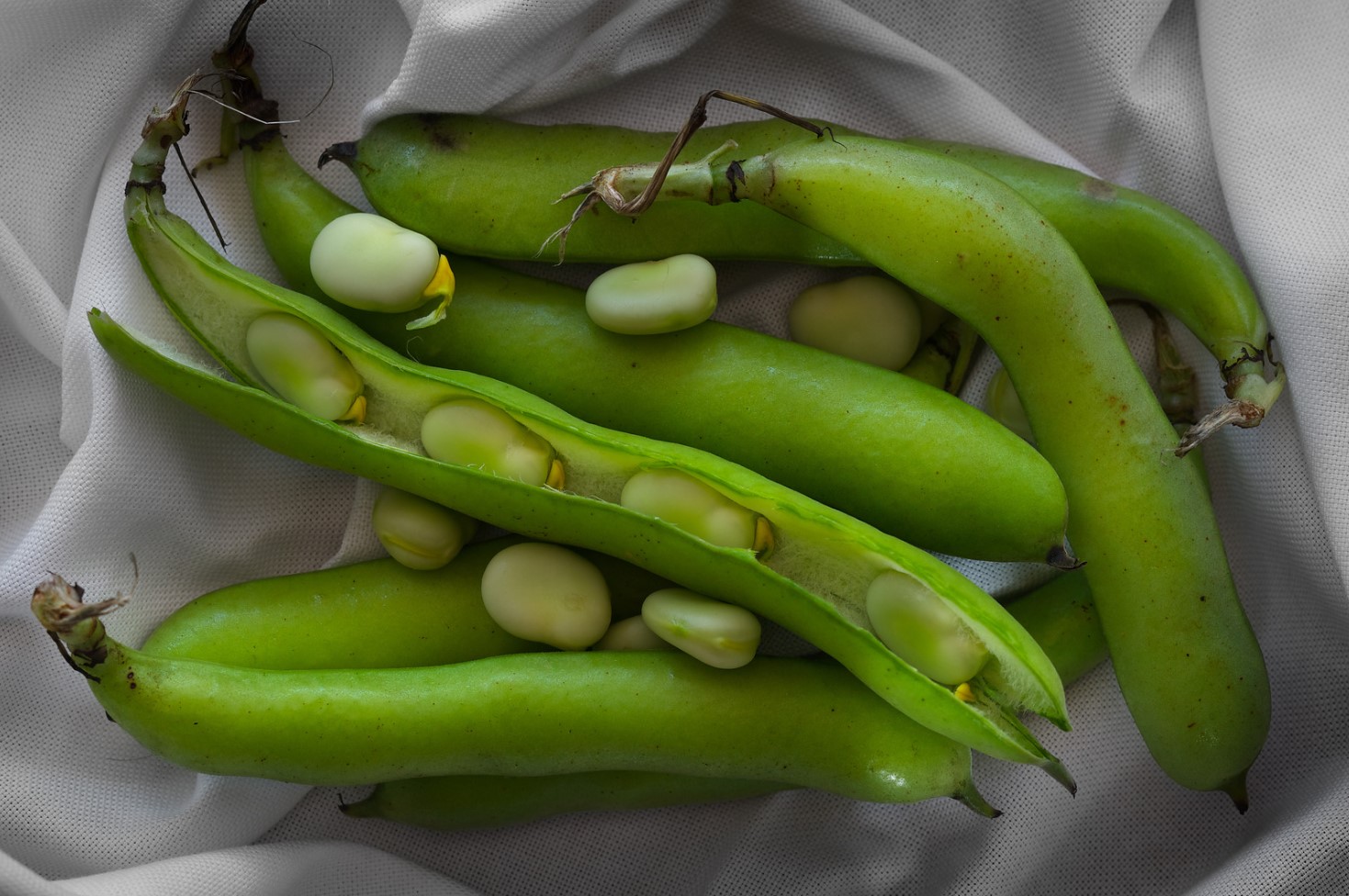
The Environmental Impact Of Broad Bean Production: Sustainable Agriculture Options
As more people become environmentally conscious and interested in sustainable agriculture, it’s important to consider the impact that food production has on the planet. Broad beans are no exception. While they’re a delicious and nutritious food source, the way in which they’re grown and harvested can have far-reaching consequences. That’s why it’s vital to explore sustainable agriculture options for broad beans and other crops.
One of the biggest environmental issues associated with broad bean production is the use of synthetic pesticides and fertilizers. These chemicals can contaminate soil and water sources, harming both wildlife and human health. To combat this issue, many farmers are turning to organic and biodynamic farming methods. These approaches prioritize natural pest control and soil health, relying on things like companion planting and compost rather than chemicals.
Another sustainable agriculture option for broad beans is regenerative farming. This approach goes beyond simply avoiding harmful pesticides and fertilizers. Instead, it seeks to actively improve the health of the soil and surrounding ecosystem. This can involve practices like crop rotation, cover cropping, and the integration of livestock into the farm system.
- Crop rotation: Planting different crops in the same area each year can help prevent soil depletion and nutrient imbalances.
- Cover cropping: Planting non-harvested crops between growing seasons can help improve soil structure and fertility.
- Integration of livestock: Grazing animals on farm land can help maintain the health of the soil and provide natural fertilizer.
Ultimately, there’s no one-size-fits-all solution for sustainable broad bean production. Each farm will need to assess its specific situation and determine which practices best align with its values and goals. However, by prioritizing natural and regenerative approaches, farmers can help protect the environment while still producing healthy and delicious crops.
Broad Beans And The Mediterranean Diet: A Staple İn Traditional Cuisine
Broad beans or fava beans, as they are more commonly known, have been an integral part of Mediterranean cuisine for centuries. They are one of the oldest cultivated crops and have a rich history that dates back to ancient times. Broad beans are not only delicious but are also packed with nutrients, making them a staple in traditional Mediterranean dishes.
The Mediterranean diet is considered one of the healthiest diets in the world, and for good reason. It primarily consists of fresh fruits and vegetables, whole grains, lean proteins, and healthy fats. Broad beans fit right into this dietary pattern, providing an excellent source of protein, fiber, and essential vitamins and minerals. They are also low in fat, making them an ideal ingredient to use in many Mediterranean dishes.
In Mediterranean cuisine, broad beans are often used in salads, stews, and soups. One of the most popular dishes is Ful Medames, a popular Egyptian breakfast dish made with mashed broad beans, garlic, and lemon juice. Another favorite is the Italian dish, Pasta e Fagioli, a pasta and bean soup that includes broad beans, tomatoes, and herbs.
- Broad beans are a good source of protein, fiber, and essential vitamins and minerals
- They are low in fat, making them ideal for Mediterranean cuisine
- Broad beans are used in salads, stews, soups, and other Mediterranean dishes
Besides their nutritional value and versatility in cooking, broad beans have also been touted for their health benefits. They are rich in antioxidants, particularly flavonoids, which have been linked to reducing the risk of heart disease and certain cancers. The fiber in broad beans also helps promote healthy digestion and can aid in weight loss.
Overall, broad beans have rightfully earned their place as a staple in Mediterranean cuisine. They are not only delicious but provide a wealth of nutritional benefits. So, the next time you’re browsing through a Mediterranean menu or looking to add some variety to your meals, consider trying out some delicious dishes made with broad beans!
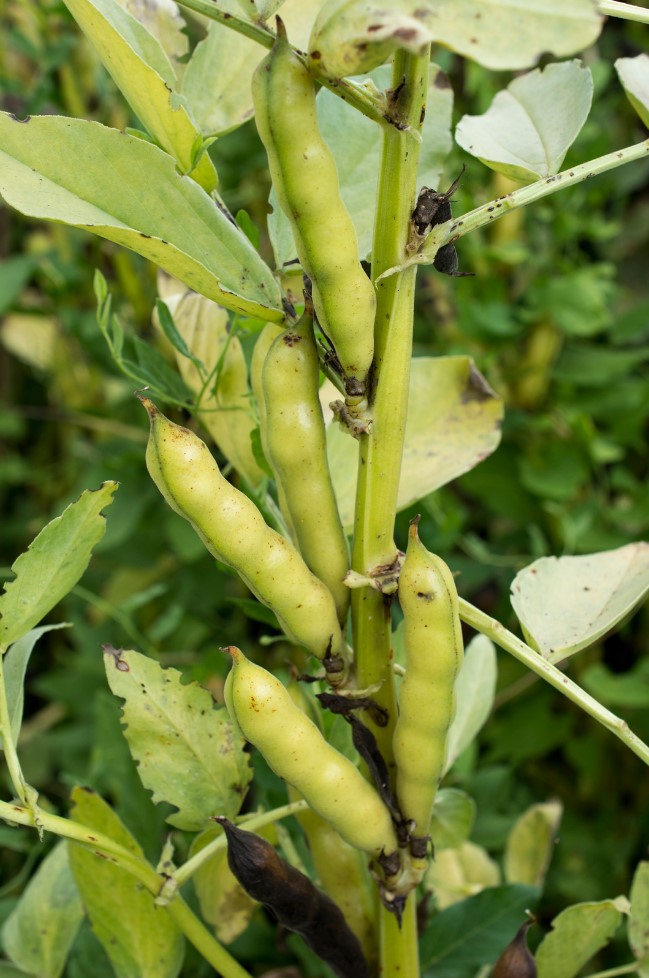
Broad Beans İn Global Cuisine: From Asia To South America
Broad beans, also known as fava beans, are a versatile and nutritious legume that have been cultivated for thousands of years. While they are native to the Mediterranean region, broad beans are now a popular ingredient in dishes from around the world, including Asia and South America.
In Asian cuisine, broad beans are commonly used in stir-fries and soups. In China, they are often paired with pork, and in Japan they are used in traditional dishes like shiroae. In South America, broad beans are a staple ingredient in many traditional dishes, including the Brazilian feijoada and the Ecuadorian locro soup.
Broad beans are also popular in Middle Eastern and North African cuisine, where they are used to make dishes like ful medames and bissara. In Europe, broad beans are often used in stews and casseroles, or served as a side dish with roasted meats.
- Broad beans are a good source of protein, fiber, and essential vitamins and minerals, making them a nutritious addition to any diet.
- When cooking with broad beans, it’s important to blanch them first to remove the bitter outer skin.
- Broad beans can be used in a variety of dishes, from salads and dips to soups and stews.
| Region | Traditional Dish |
|---|---|
| Asia | Stir-fries and soups |
| South America | Feijoada and locro soup |
| Middle East/North Africa | Ful medames and bissara |
| Europe | Stews and casseroles |
Whether you’re looking to add more plant-based protein to your diet, or simply want to try a new ingredient, broad beans are a great option. With their mild, nutty flavor and versatile culinary uses, they are a popular ingredient in dishes from around the world.
Broad Beans And Veganism: A Nutrient-Dense Protein Source
Broad Beans And Veganism: A Nutrient-Dense Protein Source
Vegan diets are becoming increasingly popular due to ethical, environmental, and health considerations. However, plant-based diets can sometimes be challenging to fulfill all necessary nutrients, especially protein. Broad beans, also known as fava beans, are an excellent source of protein that can help vegans to meet their protein needs. These beans are also rich in vitamins, minerals, and fiber, making them a nutritional powerhouse.
One cup of boiled broad beans contains approximately 13 grams of protein, which is equivalent to the amount of protein found in a serving of chicken or beef. However, unlike animal-based protein sources, broad beans are low in fat and contain no cholesterol. They are also rich in iron, folate, vitamin K, and fiber, all essential nutrients for vegans.
- Iron – vital for oxygen transportation, brain function, and immune system support
- Folate – essential for DNA synthesis, cell division, and brain health
- Vitamin K – important for blood clotting, bone health, and heart health
- Fiber – promotes digestive health, reduces the risk of chronic diseases such as heart disease, diabetes, and cancer
Broad beans are versatile and can be used in various vegan dishes such as stews, soups, salads, and dips. In Mediterranean cuisine, broad beans are a common ingredient in falafels and hummus. In Egyptian cuisine, ful medames, a traditional breakfast dish, is made with mashed broad beans, tomatoes, garlic, and lemon juice. In Asian cuisine, broad beans are used in stir-fries, curries, and noodle dishes.
| Nutrient | Amount per one cup (170g) boiled broad beans | % Daily Value |
|---|---|---|
| Protein | 13.3 g | 27% |
| Dietary Fiber | 9.2 g | 37% |
| Folate | 177 mcg | 44% |
| Iron | 2.7 mg | 15% |
| Manganese | 0.7 mg | 34% |
| Vitamin B6 | 0.4 mg | 21% |
In conclusion, broad beans are an excellent source of protein and other essential nutrients for vegans. Adding broad beans to a plant-based diet can help vegans to meet their protein needs while providing numerous health benefits. With their versatile use, broad beans are a fantastic ingredient that can be enjoyed in various vegan dishes around the world.
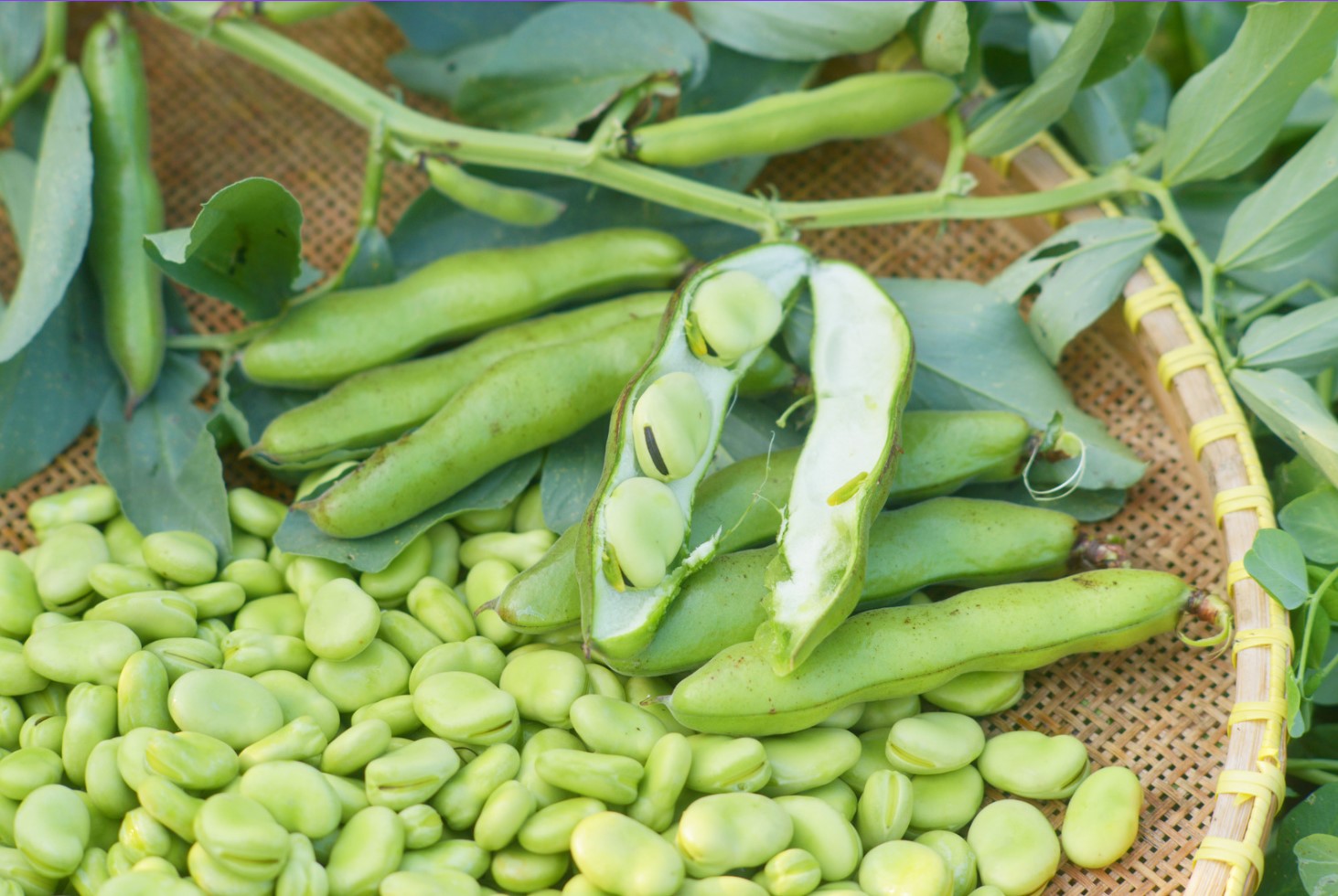
Combining Broad Beans With Other Superfoods: Recipe Ideas
Broad beans, also known as fava beans, are a delicious and nutritious legume that can be enjoyed in a variety of ways. While they are tasty on their own, combining broad beans with other superfoods can boost their nutritional value and create some tasty dishes. In this blog post, we will explore some recipe ideas for combining broad beans with other superfoods.
1. Broad Bean and Quinoa Salad: Start by cooking some quinoa and tossing it with boiled broad beans. Add some chopped red onion, diced tomatoes, and a handful of fresh cilantro. Drizzle with a lemon and olive oil dressing, and season with salt and black pepper to taste.
2. Broad Bean and Avocado Toast: Spread mashed avocado on a slice of toasted bread, and top it with boiled broad beans. Sprinkle with some chili flakes and a squeeze of lime juice for a delicious and nutritious breakfast option.
- 3. Broad Bean and Spinach Hummus: Combine boiled broad beans, spinach, garlic, and tahini in a food processor. Pulse until smooth, then add lemon juice, olive oil, salt, and pepper to taste. Serve with pita chips or veggies.
- 4. Broad Bean and Sweet Potato Curry: In a pan, sauté onions, ginger, and garlic until fragrant. Add boiled broad beans and diced sweet potato, and stir to combine. Pour in coconut milk and simmer until the sweet potato is tender. Serve with naan bread or rice.
| Superfood | Benefits |
|---|---|
| Kale | High in vitamins A, C, and K; rich in antioxidants; good for bone health |
| Quinoa | High in fiber and protein; contains essential amino acids; gluten-free |
| Avocado | Contains heart-healthy monounsaturated fats; high in fiber and potassium; good source of vitamin C and K |
5. Broad Bean and Kale Salad: Toss boiled broad beans with chopped kale, sliced almonds, and crumbled feta cheese. Drizzle with a lemon and olive oil dressing, and season with salt and black pepper to taste.
These are just a few recipe ideas for combining broad beans with other superfoods. Whether you’re looking for a hearty salad, a comforting curry, or a tasty snack, broad beans can be a versatile addition to your diet. So get creative in the kitchen and enjoy the delicious and nutritious benefits of this amazing legume!
Broad Beans For Blood Sugar Regulation: A Low-Glycemic Option
Broad Beans, also known as Fava Beans, are a nutrient-dense legume that have been cultivated for thousands of years. They are a low-glycemic food option that can help regulate blood sugar levels, making them a great addition to a healthy diet.
Broad Beans are an excellent source of complex carbohydrates, fiber, and protein, which are all important nutrients for maintaining balanced blood sugar levels. Complex carbohydrates are digested more slowly than simple carbohydrates, resulting in a slower rise in blood sugar levels. The high fiber content in Broad Beans also aids in slowing down the absorption of sugar into the bloodstream, which can prevent spikes in blood sugar levels.
- In addition, Broad Beans are also a good source of magnesium, a mineral that has been shown to help regulate blood sugar levels.
- They also contain folate, an important B-vitamin that may help improve insulin sensitivity, which is the body’s ability to use insulin effectively to regulate blood sugar levels.
- Broad Beans also contain antioxidants and anti-inflammatory compounds that can help reduce the risk of diabetes and other chronic diseases associated with high blood sugar levels.
Broad Beans are a versatile ingredient and can be enjoyed in a variety of dishes. They can be boiled, roasted, or pureed to make dips and spreads. They can also be added to salads, soups, and stews. For a delicious and healthy snack, try roasting salted Broad Beans in the oven for a crispy, crunchy treat.
In conclusion, incorporating Broad Beans into your diet can provide a low-glycemic option to help regulate blood sugar levels. They are a nutrient-dense food that offers numerous health benefits, making them a smart choice for anyone looking to improve their overall health and wellbeing.
An Allergy-Free Option: How Broad Beans Fit İnto Gluten-Free And Dairy-Free Diets
An Allergy-Free Option: How Broad Beans Fit İnto Gluten-Free And Dairy-Free Diets
If you are allergic to gluten or lactose, it can be challenging to find protein sources that fit into your daily diet. But don’t worry! Broad beans may be the solution you need. These beans are naturally free of gluten and lactose, making them a great option for those who suffer from allergies or intolerances.
Broad beans are also a good source of protein, fats, carbohydrates, and fiber. They contain essential vitamins and minerals such as iron, potassium, and magnesium, making them a nutrient-dense food for your diet. Broad beans are also low in fat and calories, making them an excellent food if you are trying to lose weight.
- 500 grams of broad beans contains only 200 calories but provides 21 grams of protein.
- This makes broad beans an excellent choice for people who want to maintain muscle mass while losing fat.
One of the best things about broad beans is that they are versatile and can be added to many dishes to enhance their nutritional value. You can make dips, salads, soups, stews, and even burgers with broad beans. Some popular dishes include mashed broad beans and broad bean hummus.
| Nutrient | Amount per 100g |
|---|---|
| Protein | 8.6g |
| Carbohydrates | 16.3g |
| Fats | 1.5g |
| Fiber | 6g |
| Iron | 2.7mg |
| Potassium | 360mg |
| Magnesium | 33mg |
In conclusion, broad beans represent an excellent option for people who suffer from gluten or lactose intolerance. They are a low-fat, low-calorie food that can still provide you with an impressive amount of protein and other essential nutrients. Additionally, broad beans can be incorporated into a variety of dishes, making them an excellent addition to any diet.